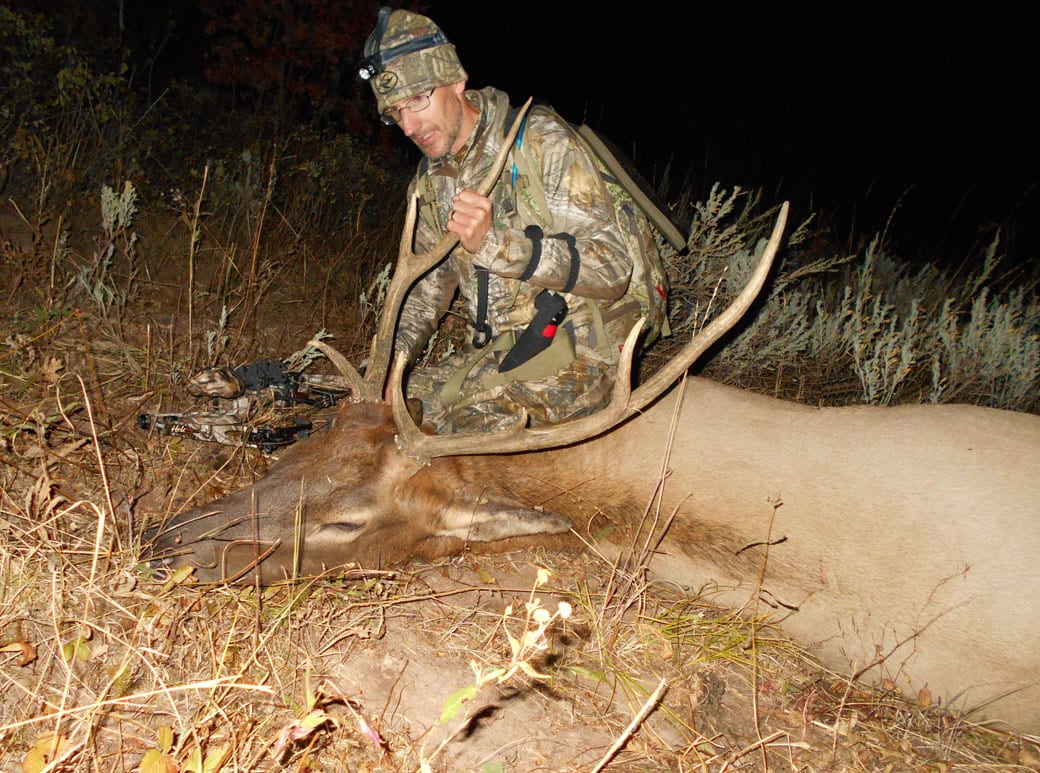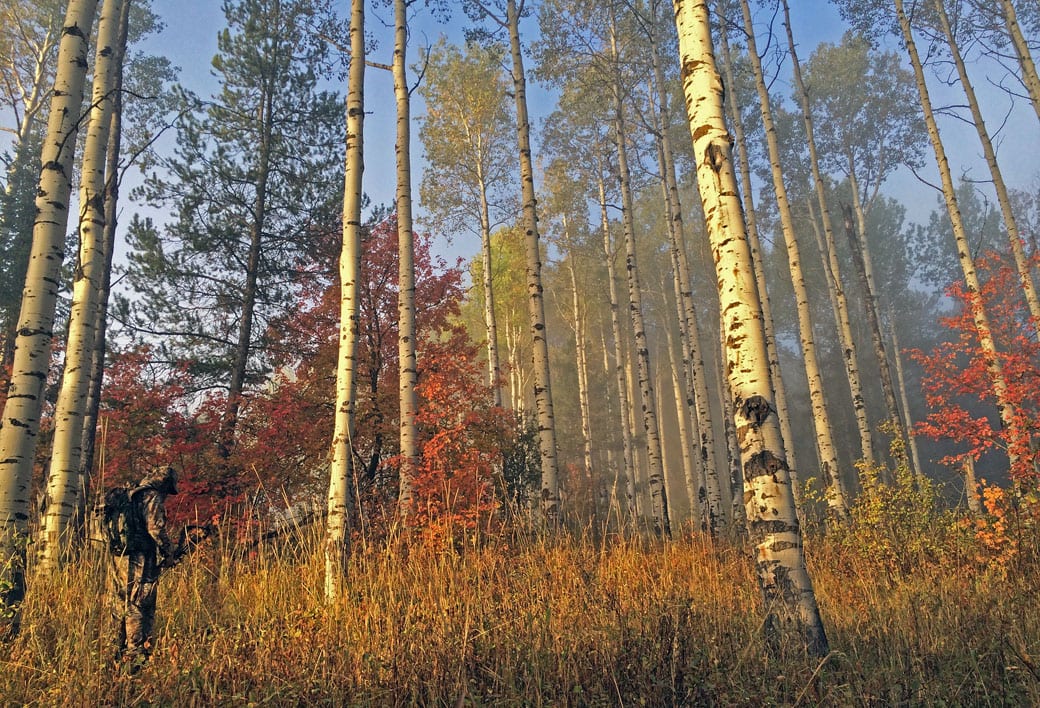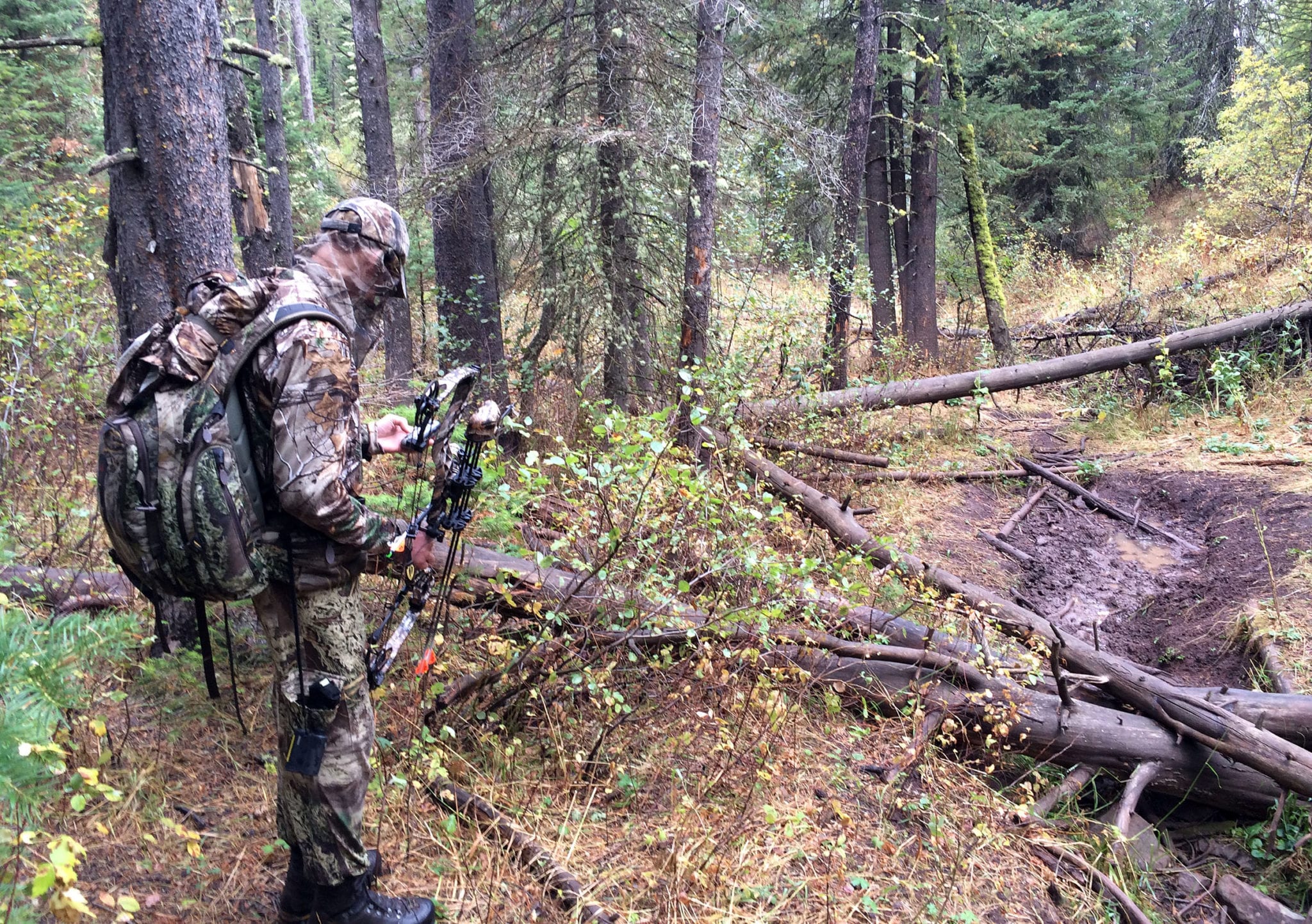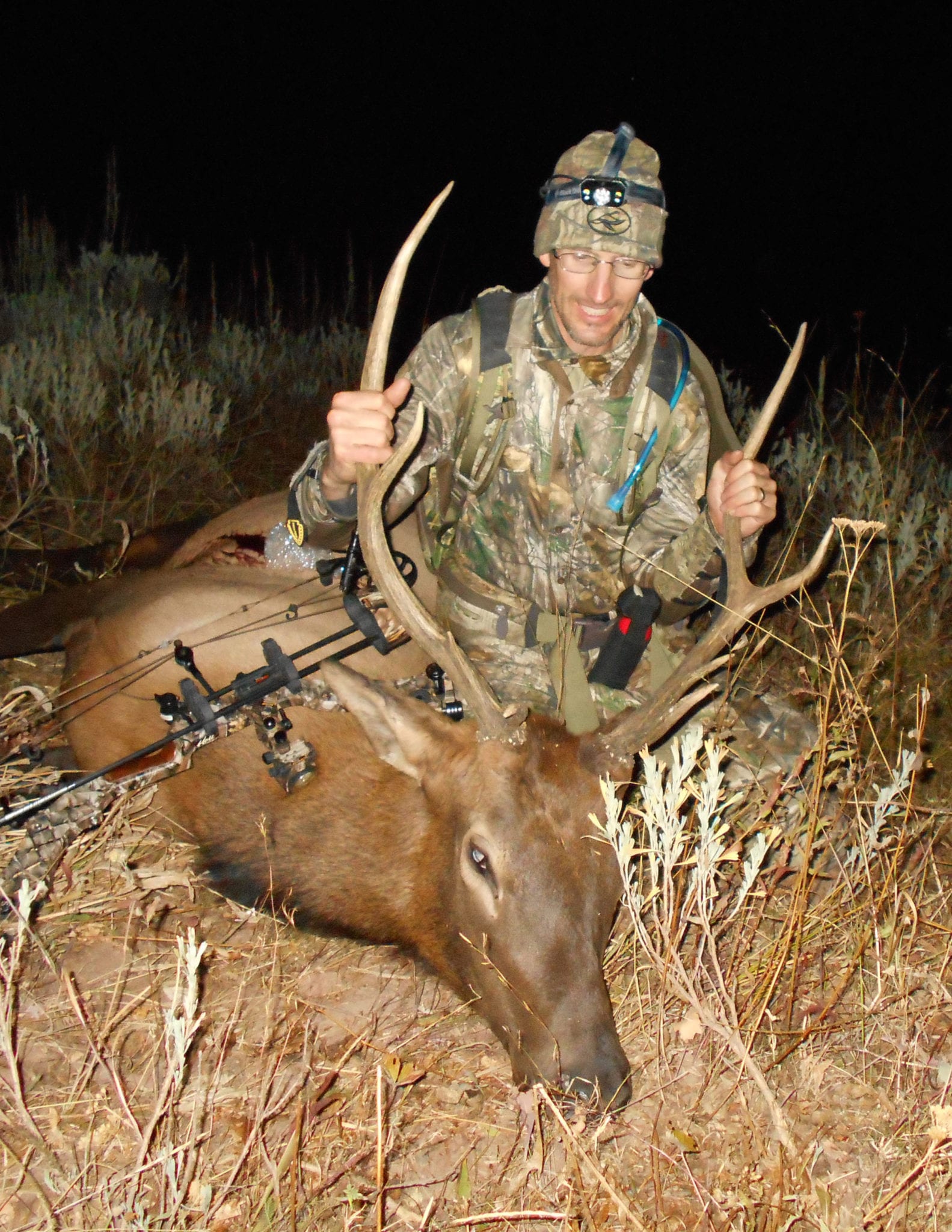You typically get one shot at a given animal when bowhunting, no matter how fast you grab a second arrow, nock it to your bowstring, attach your release and pull to full draw.
In the time it takes to read that sentence, the animal is likely 50 yards deeper into the woods or halfway across the clearing. In other words, it’s safe from any hope of a second shot. Of course, that’s one of bowhunting’s many charms and challenges, along with its short effective range.
And when bowhunting elk, the “one-shot challenge” has a second meaning, at least where my friend Chris White and I meet each September in southeastern Idaho. That is, we usually must hunt hard and long to get one shot a week combined.

Chris White of Ohio admires the bull elk he arrowed Sept. 16 in southeastern Idaho.
Therefore, my heart sank at 7:08 a.m. Mountain time Sept. 9 when my arrow rattled through sagebrush beneath a bull’s brisket 40 yards away, and ricocheted into parts unknown, never to be seen again. The startled bull, clearly untouched, jumped sideways and trotted across the meadow’s grass. About 100 yards later it stopped to look back before disappearing into the Targhee-Caribou National Forest.
So there I was, barely 15 minutes into the first morning of my annual two-week do-it-yourself elk hunt, and I’d blown what was likely my one chance.
But at least I had an excuse, even though I take blame for that, too. Something felt and sounded wrong as I released the arrow, which kicked up dirt and sage dust roughly 30 inches below my aiming point. What the …?
A minute later, about the time I heard the bull give an alarm bark back in the timber, I nocked another arrow and drew my bow again to verify my suspicions. Yep. Just as I feared: My bow’s upper limb was pressed lightly against an overhead limb I hadn’t noticed in all the excitement. When I released my shot at the elk, the top bow limb had smacked into the branch.
In effect, my shot blew up on the launch pad.
Even though I still had many days left to hunt, I knew not to take a second opportunity for granted. Seeing or hearing elk is seldom a problem. But getting one within range and in the clear? That’s far more difficult.
The mountainous area we hunt is not only steep and rugged, it’s also thick with laurel brush, and lush with young lodge-pole pine and Douglas fir. In fact, it’s common for elk to bugle 50 to 75 yards away and be invisible for all the cover.
White arrived in camp from Ohio the next day, and listened to my tale of woe while unpacking and setting up his gear. We agreed to spend the next day hunting “The Slot,” a saddle about 1.5 miles away in a pyramid-shaped ridgeline behind camp. When that long ridgeline turned up little fresh sign, we plotted our return to “the mesa” on Sept. 12.
That’s the site where I missed my shot three days earlier. It’s one of the few large clearings in the forest, and elk seem drawn to its dry forbs and grasses. Trouble is, although it’s only about a mile from camp as the raven flies, the mesa is about 1,100 feet above camp and roughly 1.5 miles on its most direct ground route.

Chris White, lower left, sneaks through an aspen grove while bowhunting elk in southeastern Idaho.
Further, getting there is more climbing than hiking, which might explain why it’s a 90-minute trip going up in the morning and a 55-minute trip going down in the evening. And bowhunting the mesa isn’t easy. Its winds are fickle, and elk enter and leave nearly anywhere along its roughly three-quarter-mile periphery.
Elk aren’t as predictable in their movements as whitetails, so you can’t simply monitor the area a couple of nights or mornings and think you’ve figured out where to sit. But after missing my shot on the hillside bordering the mesa’s eastern edge, I studied the site more carefully.
About 100 yards downhill from there is a wallowing area that’s drier than kiln-baked clay within a day of most rainfalls. Elk tracks pocked the wallow’s red soils, but they could have been fossilized for centuries for all I knew. Just beyond is a small patch of aspens, fir and pine where the mesa slants into a north-running draw, which continues downhill for nearly a mile. The brushy patch forms a slight point bordering the wallow, and its southern side ends about 50 yards downhill from an ancient elk path visible on aerial photos.

Chris White checks out an active wallow about 200 yards from where he arrowed his elk.
I tucked myself into a pocket of aspens and pines about 10 yards in from the patch’s edge and studied the wallow and the yellow-brown meadow rising toward the trail. Not every elk entering the mesa would pass within bow range, but I could see no better spot to wait.
I sat there Monday morning and, sure enough, didn’t see any of the four elk that crossed the mesa. White saw two of them from his spot about 200 yards away, and I heard two more behind me.

Chris White dropped this bull with a 23-yard shot as it checked out a dry wallow.
Chris White checks out an active wallow about 200 yards from where he arrowed his elk.
We then took turns sitting there the next four days. Typically, when White sat there, the elk appeared. When I sat there, the elk stayed away. That pattern continued Friday evening when White watched the mesa while I hunted a half-mile down the mountain in an aspen meadow we call “the balcony,” which drops sharply into thick laurel and pine.
My last text message to White at 5:21 p.m. read, “Hope the mesa delivers!”
At 7:44 p.m. I heard my iPhone buzz. White’s reply read, “It did.”
White said a young bull, probably 2.5 years old, crossed the mesa about 7:30 p.m. to check out the dry wallow. The bull carried a rack with four points on each side, which was smaller than White’s 5×5 bull from 2012.
Few meats, however, taste better than young elk, so when the bull presented a quartering-away shot at 23 yards, White released his arrow. Soon after, the bull dropped, crashing into the sage brush as White watched.
Even though it took a team effort, we had beaten our odds and gotten two shots. We even have an elk to show for it.

 By
By 



